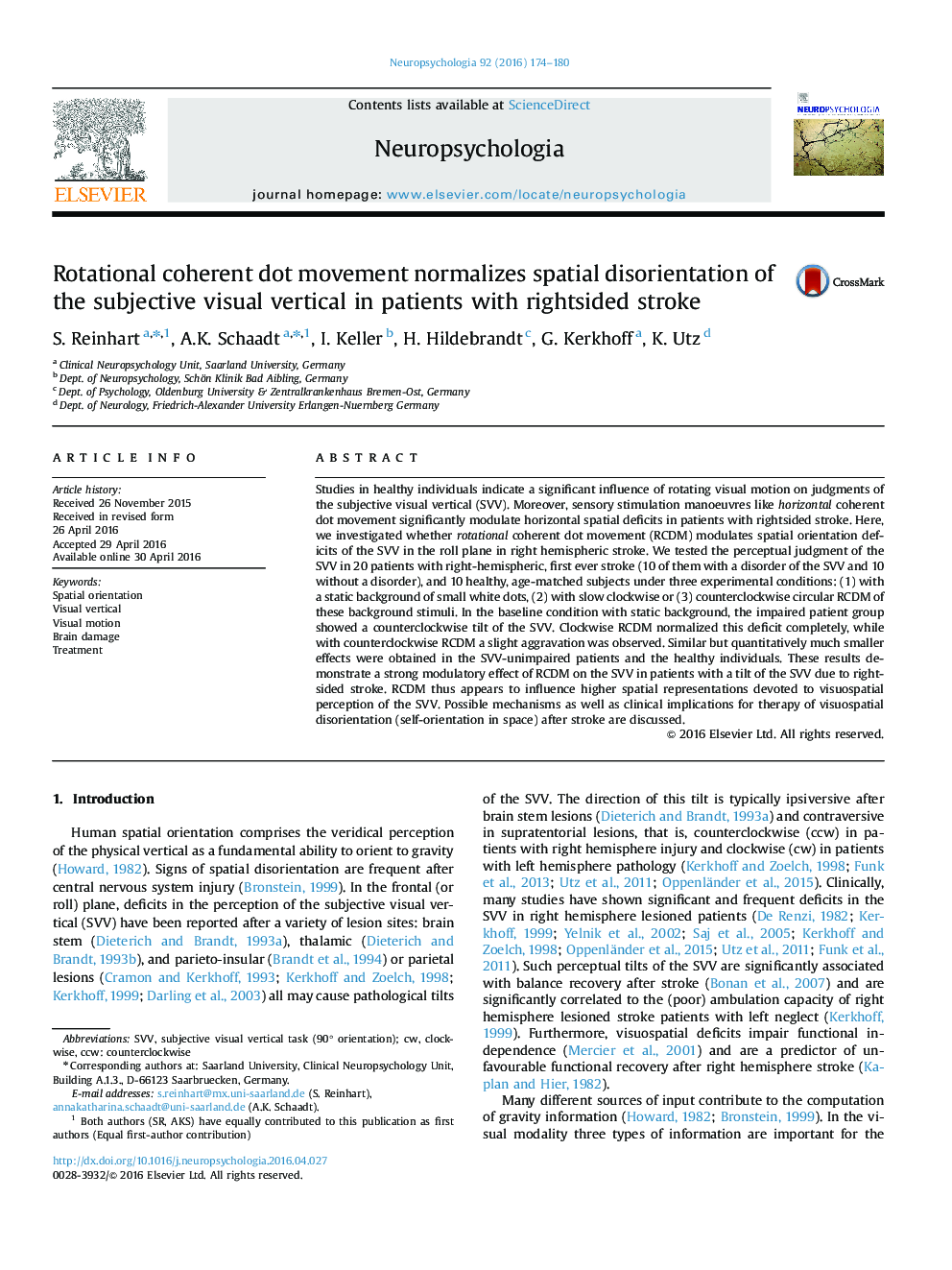| کد مقاله | کد نشریه | سال انتشار | مقاله انگلیسی | نسخه تمام متن |
|---|---|---|---|---|
| 5045439 | 1475562 | 2016 | 7 صفحه PDF | دانلود رایگان |
- Perceptual tilts of the subjective visual vertical (SVV) are frequent after stroke.
- Effects of rotating visual motion on the SVV were examined.
- Tilts of the SVV were normalized transiently by rotating visual motion.
- Rotating visual motion may be a treatment option for patients with tilts of the SVV.
Studies in healthy individuals indicate a significant influence of rotating visual motion on judgments of the subjective visual vertical (SVV). Moreover, sensory stimulation manoeuvres like horizontal coherent dot movement significantly modulate horizontal spatial deficits in patients with rightsided stroke. Here, we investigated whether rotational coherent dot movement (RCDM) modulates spatial orientation deficits of the SVV in the roll plane in right hemispheric stroke. We tested the perceptual judgment of the SVV in 20 patients with right-hemispheric, first ever stroke (10 of them with a disorder of the SVV and 10 without a disorder), and 10 healthy, age-matched subjects under three experimental conditions: (1) with a static background of small white dots, (2) with slow clockwise or (3) counterclockwise circular RCDM of these background stimuli. In the baseline condition with static background, the impaired patient group showed a counterclockwise tilt of the SVV. Clockwise RCDM normalized this deficit completely, while with counterclockwise RCDM a slight aggravation was observed. Similar but quantitatively much smaller effects were obtained in the SVV-unimpaired patients and the healthy individuals. These results demonstrate a strong modulatory effect of RCDM on the SVV in patients with a tilt of the SVV due to right-sided stroke. RCDM thus appears to influence higher spatial representations devoted to visuospatial perception of the SVV. Possible mechanisms as well as clinical implications for therapy of visuospatial disorientation (self-orientation in space) after stroke are discussed.
Journal: Neuropsychologia - Volume 92, November 2016, Pages 174-180
